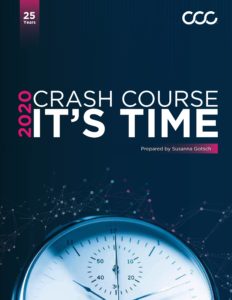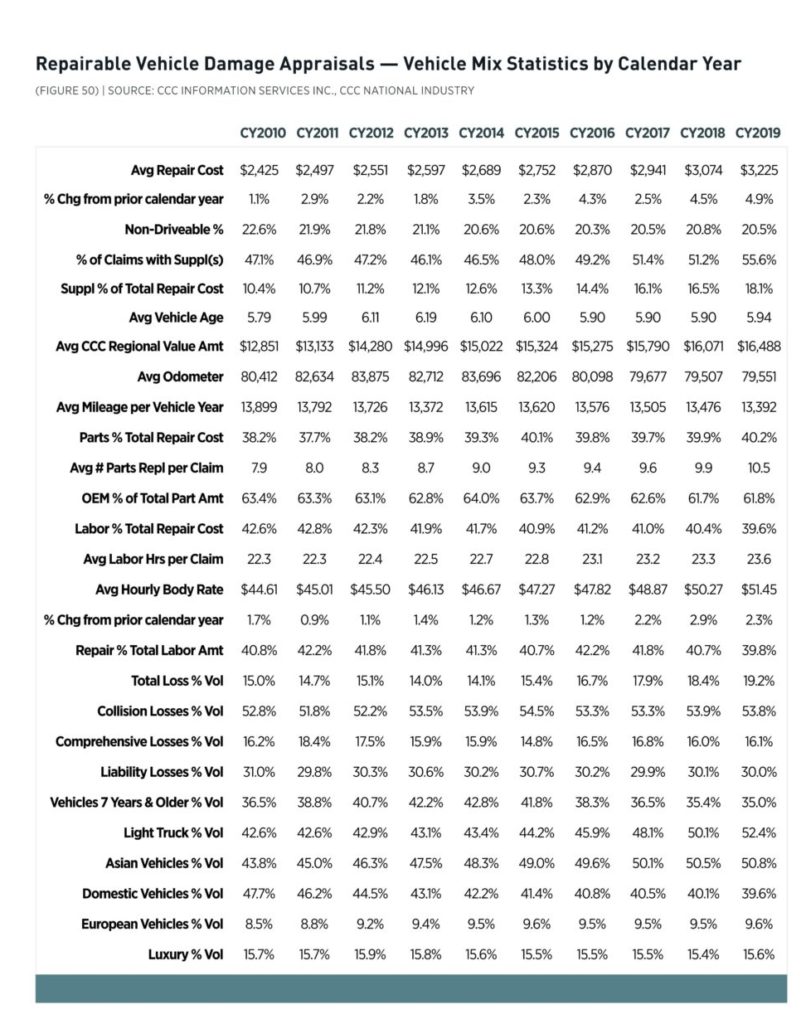
25th CCC ‘Crash Course’ released; get your free copy today
By onAnnouncements | Business Practices | Education | Market Trends | Repair Operations
CCC on Tuesday celebrated the 25th anniversary of its “Crash Course” with the release of the 2020 edition of the free publication describing auto body repair industry statistics.
CCC author Susanna Gotsch, a director and lead analyst for the company, has worked on the document since its debut 25 years ago. She said it started as a response to questions the information provider had received about used vehicle prices, which at the time “from a CPI perspective” were rising 8-10 percent annually.
“The response was really good,” Gotsch said. It led to her role today and 25 years of CCC supporting such perspective — while never charging for the “Crash Course,” according to Gotsch. She called the 25 years of financial and other support for the project a “nice story” about CCC’s commitment to support and provide visibility to the market.
“CCC’s technology has been connecting the industry for 40 years,” Gotsch said in a statement in a news release announcing the document. “Crash Course provides data-driven insights into the transformational changes the industry is experiencing. Technology like mobile, IoT, and AI have brought dramatic shifts to vehicles and the who, how, why and when of customer engagement. Understanding and streamlining complexities stemming from these new technologies, along with the rising cost of healthcare, data privacy, and climate change is critical to establishing a view of the future of mobility.”
The document provides stats and trends that both auto body shop owners and employees can use to plan strategy for their companies and careers, respectively. Download your free copy today here.
It’s important to realize that some of the data from the document is aggregated from the millions of estimates built in CCC, which can mean a statistic might measure something slightly different than what you’d assume. For example, the statistic of average labor rate isn’t the average U.S. door rate. It’s the average of whatever rates wound up on estimates, such as a deflated rate a DRP shop contractually agreed to charge an insurer.
Nevertheless, the data still provides a sense of macro trends within the industry and is still valuable. For example, even though the average labor rate was derived from individual estimate rates prepared under a mix of criteria, knowing the end result was up or down from 2018 still tells you something about the industry’s pricing direction as a whole.
Here’s some of the major stats and trends available from the 2020 “Crash Course.”
- The average body labor rate in 2019 rose 2.3 percent over 2018 to $51.45, while the average paint labor rate rose 2.1 percent to $50.96.
- The percentage of total losses rose from 18.4 percent to 19.2 percent of vehicle volume, and the average vehicle was totaled at a slightly younger age of 9.6 years.
- Severity on repairable appraisals rose 4.9 percent to $3,225.
- Repairs fell as a percentage of the total labor amount to 39.8 percent. Labor itself fell as a percentage of the total repair cost to 39.6 percent. However, the average labor hours per claim rose slightly to 23.6 percent.
- The percentage of repairable estimates with supplements rose a whopping 4.4 percentage points to 55.6 percent – and the average supplement rose to equal 18.1 percent of the overall repair cost.
More information:
CCC, March 17, 2020
CCC, March 17, 2020
Images:
The cover of the 25th CCC “Crash Course” is shown. (Provided by CCC)
Some key collision repair data from CCC’s 2020 “Crash Course.” (Provided by CCC)

